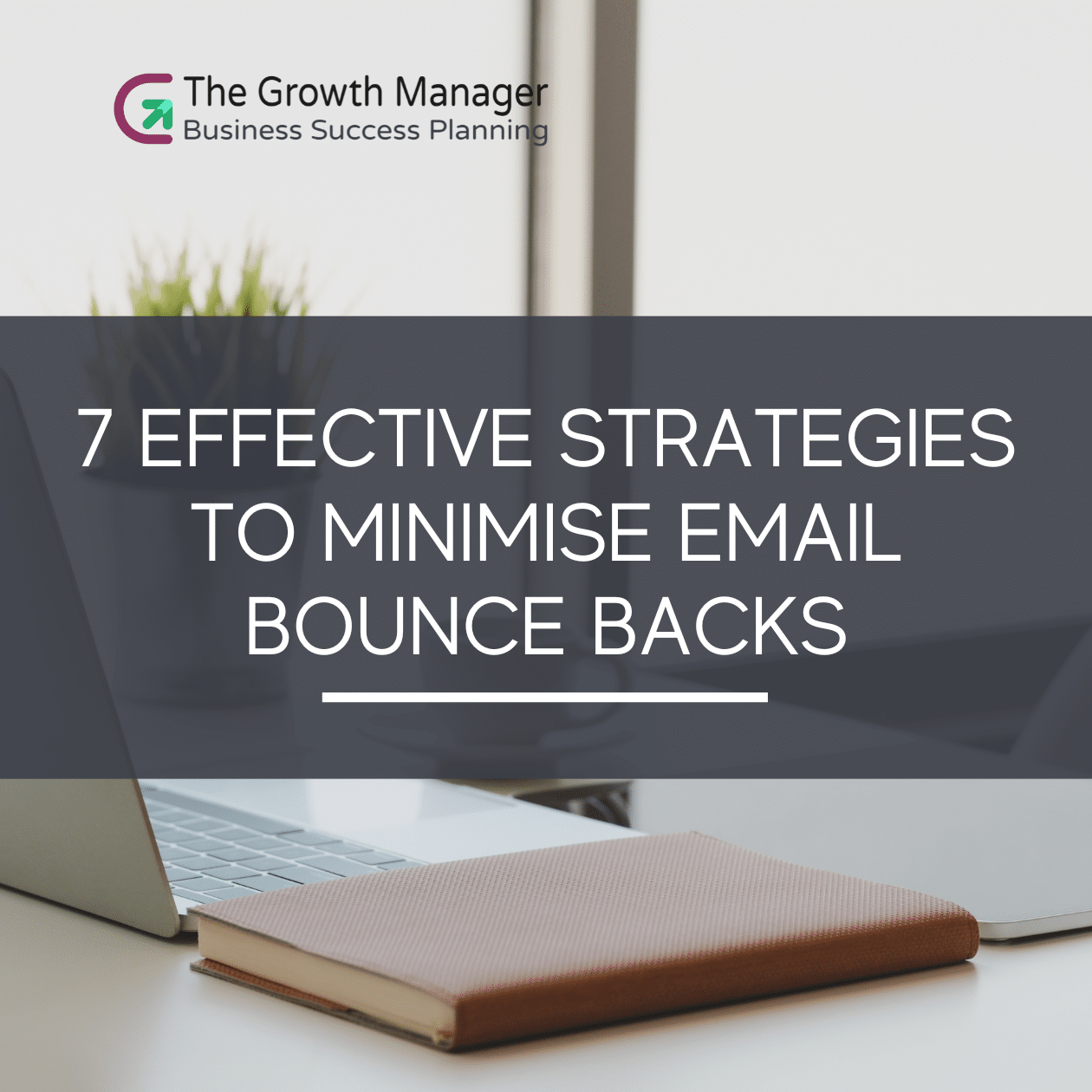How to Stop Email Bouncebacks and Reach Your Customers
Imagine spending hours crafting the perfect email—an update for loyal customers, an exclusive offer, or a personalised follow-up. You hit send, expecting engagement, but instead, a portion of your emails never make it to inboxes. Some addresses don’t exist, some servers reject the message, and some inboxes are too full to accept anything new.
Each bounce isn’t just a missed opportunity—it signals to providers that your messages might not be reliable. Over time, too many bouncebacks can push your emails straight to spam folders or block them entirely, cutting you off from potential customers.
To keep your emails landing where they should, it’s essential to understand why they bounce and take steps to prevent it. Below are seven strategies to reduce email bouncebacks and improve delivery rates.
 What Are Email Bouncebacks?
What Are Email Bouncebacks?
An email bounceback happens when a message doesn’t reach its recipient. There are two main types:
- Hard Bounce: The email address is invalid or doesn’t exist. The message will never be delivered.
- Soft Bounce: The recipient’s inbox is full, or there’s a temporary issue with their email provider. The email might still be delivered later.
A high bounce rate affects the sender’s reputation. Email providers may start filtering out your messages, making it harder to reach customers.
Strategy 1: Keep Your Email List Up to Date
Sending emails to old or incorrect addresses increases bounce rates. A well-maintained list ensures you reach real people who want to hear from you.
Scenario: You’re running a promotion for a new product. You email 5,000 contacts, but 800 bounce back because those addresses are outdated. That means fewer potential sales and a warning sign to email providers that your messages may not be reliable.
How to fix it:
- Remove email addresses that keep bouncing.
- If someone hasn’t engaged in months, try sending a re-engagement email before removing them.
- Avoid buying email lists. They often contain inactive or fake addresses.
Strategy 2: Check Email Addresses Before Sending
Verifying emails before sending reduces hard bounces. It ensures you’re only reaching active addresses.
Scenario: A customer signs up for your newsletter but accidentally types “gamil.com” instead of “gmail.com.” Without verification, you send an email that bounces immediately.
How to fix it:
- Use email validation tools to check if an address is real before sending.
- Set up real-time verification on your sign-up forms to instantly correct mistakes.
How to Verify Emails:
- Use email validation tools like ZeroBounce, Hunter, or NeverBounce to check the legitimacy of email addresses before adding them to your list.
- Enable real-time validation on sign-up forms to prevent fake or mistyped emails from being submitted.
- Regularly audit your email database to identify and remove invalid contacts.
Strategy 3: Use Double Opt-In for New Subscribers
Double opt-in requires subscribers to confirm their email before receiving messages. This ensures the email is correct and the person wants to hear from you.
Scenario: A bot fills out your sign-up form with hundreds of fake emails. Those fake addresses flood your list without a confirmation step, leading to high bounce rates and spam complaints.
How to fix it:
- When someone subscribes, send a confirmation email asking them to click a link.
- Only add them to your list after they confirm.
This step keeps your email list clean and filled with engaged subscribers.
Strategy 4: Monitor Bounce Reports
Bounce reports show which emails failed and why. Reviewing these reports helps identify and fix problems before they affect your sender reputation.
Scenario: You notice a pattern—emails sent to customers with Yahoo addresses often bounce. The issue could be with Yahoo’s servers or how your emails are formatted.
How to fix it:
- Check your bounce reports regularly.
- Remove addresses that show as hard bounces.
- If many emails bounce from the same provider, check for a technical issue or if that provider has specific filtering rules.
Strategy 5: Improve Email Content and Structure
Some emails get rejected because they look like spam. Certain words, poor formatting, and unbalanced image-to-text ratios can trigger spam filters.
Scenario: You send an email with a subject line that says “FREE!!! LIMITED TIME OFFER!!!” The email provider marks it as spam and never reaches the inbox.
How to fix it:
- Use a clear, professional sender name.
- Avoid spam-triggering words like “free,” “urgent,” or “exclusive deal.”
- Balance images and text. Too many images without enough text can flag spam filters.
- Make sure your emails display correctly on mobile devices.
Strategy 6: Choose a Reliable Email Service Provider (ESP)
A good ESP helps ensure emails are delivered successfully and provides tools to monitor performance.
Scenario: You switch to a cheaper email provider to save money, but suddenly, your emails start bouncing or going to spam.
How to fix it:
- Choose an ESP with a strong sender reputation.
- Ensure they provide email authentication tools like SPF, DKIM, and DMARC to verify your emails.
- Use an ESP that handles bounces automatically and removes invalid addresses from your list.
Strategy 7: Follow Email Marketing Rules
Regulations protect users from spam. Breaking these rules can lead to emails being blocked or legal issues.
Scenario: You collect emails at an event but don’t get permission to send marketing messages. You add them to your list anyway, and some mark your emails as spam. Your future emails now have a higher chance of getting blocked.
How to fix it:
- Always get consent before sending marketing emails.
- Include a clear unsubscribe option in every email.
- Follow legal requirements like the Spam Act in Australia and GDPR in Europe.
Keep Your Emails on Track
Reducing bouncebacks takes ongoing effort. Regularly updating your list, verifying addresses, and improving content keep your messages reaching inboxes. A strong email strategy helps businesses stay connected with their audience and drive results.
Need help improving your email marketing?
At The Growth Manager, we help businesses improve email deliverability and customer engagement. Download our Email Marketing Strategy Guide today and keep your emails on track.






